Everything You Always Wanted to Know About Eclipses
And were kind enough to ask.

The Great American Eclipse is nearly upon us! On Monday, the Moon’s shadow will cut a wide swath right through the center of the country to the delight, wonder, and fascination of millions of eclipse watchers. To prepare you for the once-in-a-lifetime (for some) event, we asked you what you most want to know about the spectacular celestial event. You did not disappoint!
We picked 15 of the most-asked and most-intriguing questions sent to us, and then scoured the internet and reached out to experts to get you answers. Before you witness this most jaw-dropping natural event, here’s everything you wanted to know about the eclipse (and probably a few things you didn’t know you were curious about).
Bob from Absecon, New Jersey, asks:
What date and between what times will I be able to see the eclipse from my town?

By far the most frequently asked question was whether the eclipse would be viewable from where you are. The most stunning views of the eclipse will be within the path of totality, where the Sun will be completely obscured by the Moon. There, camping sites and lodging have been sold out for months (even years, in some cases), and millions of people are expected to flood rural communities nationwide for the best views. So, expect traffic and crowding if you plan to seek totality at the last minute.
But even outside of the path, the skies will darken with a partial eclipse over the entire country (Hawaii and Alaska, too) at some point on August 21.
Thankfully, NASA has an exhaustive database of materials and resources that can tell you exactly when the eclipse will darken your patch of sky, and by how much. There are also interactive maps from NASA and eclipse fanatic Xavier Jubier that can provide even more granular data about every moment.
However, no matter where you are, your view of the eclipse is going to depend greatly on the weather. A simple cloudy day could block your view entirely. Be sure to check the weather if you plan on making an event of it. —Eric Grundhauser, Staff Writer
Jacob from Miami, Florida, asks:
Why do you have to wear special glasses when watching an eclipse?

Many readers had questions about that most iconic piece of eclipse gear, the glasses. We asked Rick Fienberg, press officer for the American Astronomical Society for the lowdown eclipse eye protection. “Eclipse glasses are thousands of times darker than ordinary sunglasses and block almost all the sun’s ultraviolet, visible, and infrared light,” he says. “Ordinary sunglasses block 50 percent. Eclipse glasses block 99.999 percent. They are made of special materials that absorb and/or reflect the Sun’s radiation at all wavelengths that could potentially harm our eyes.”
There is, during the eclipse, a very small window of time when you can remove the glasses—totality. “Eclipse glasses are meant for use during the partial phases of the eclipse, when the Moon blocks part—but not all—of the Sun’s bright face,” he says. “You can also use them on any sunny day, though there’s not much to see unless there happens to be a ginormous sunspot, i.e., one big enough to be visible to the safely filtered but otherwise unaided eye. The only time it is safe to remove the filters and look directly at the Sun is during totality, when the Moon covers the entire bright face of the Sun and the solar corona is visible.” All of that being said, this is by no means an exact guide, so always take the proper care when looking at the sun.
Also, Feinberg warns people to never ever use eclipse glasses as protection when looking through telescopes or binoculars. There are special filters for that (see below). —EG
Julie from Chicago, Illinois, asks:
Have there ever been any documented cases of eclipse blindness?

Surprisingly, for all the risk associated with staring at the Sun, there are few known cases of eclipses completely blinding people. An investigation of the question on Live Science states that there have been more than 100 documented cases of serious or permanent vision damage caused by eclipses, which isn’t bad considering the frequency of eclipses and how many millions of people have experienced them, even without eclipse glasses.
The damage, technically called “solar retinopathy,” is not caused by the eclipse itself, but people watching it tend to force themselves to stare, and overcome the normal reflex to look away. The lowered amount of perceived light makes that easier to do.
Most people who have reported problems with their eyesight after an eclipse find that the effects fade with time. But permanent damage is a real risk, so wear those glasses, or don’t look for too long, even if you’re shading your eyes. —EG
Vince from Florida asks:
How will this eclipse affect werewolves?

Multiple people asked how the eclipse will impact werewolves. Sure enough, there is lore on how solar eclipses affect lycanthropes. According to the blog Ask Mystic Investigations, the eclipse could cause werewolves to transform prematurely and act erratically. Resource blog Your Lupine Life states that lunar eclipses tend to make werewolves “extra agitated an (sic) extra horny as weird as that may sound you also experience mood swings and your strength and speed will become increasingly strong.”
Those who think they have this terrible affliction (and the people around them), should take the appropriate precautions, up to and including an eclipse cage of some sort. —EG
Ken from Grand Island, Nebraska, asks:
I’ve read that I need a special filter for my camera. Where do I find one?
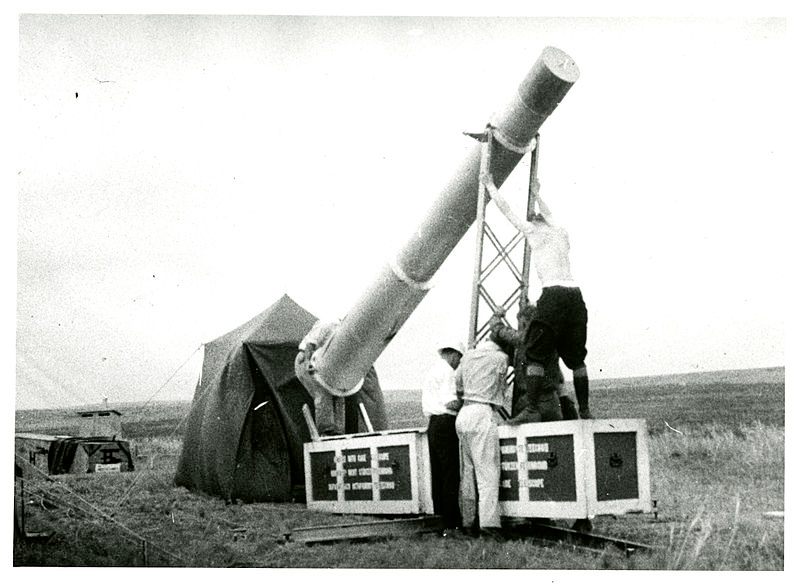
Multiple people had questions about their cameras and how to take pictures of the eclipse, and any advice depends on the camera you’re using.
The vast majority of people trying to photograph the eclipse are going to do it with a smartphone, and Apple told USA Today that direct sunlight has little ability to damage the digital image sensor on a smartphone. The cameras on phones are usually very wide angle, meaning the sun will be just a tiny dot in photos taken with them. A more pressing question is why one would bother—unless your phone camera is covered by a solar filter (the one you use for your eyes will do), any attempt at photos of it shy of totality are going to be washed out by glare. And even with a filter, the sun will still be little more than a tiny, pixelated speck. A better way to remember the moment might be to capture the scene around you, maybe with the eclipse in the background.
More serious cameras with larger lenses, such as SLRs, are more susceptible to damage from the Sun. Picture a magnifying glass, a sunny day, a line of ants, and a sadistic child. The large, magnifying optics of zoom lenses, especially the large ones needed to get a tight image of the eclipse, can focus the sunlight in a way that can damage a sensor as easily as it can damage an eye. Solar filters, widely available at camera stores, take away this risk by reducing the light from the sun by about 100,000 times, and are a necessity for useful pictures. Just remember not to use the viewfinder to look at the Sun.
This all changes at the moment of totality, however. Your eclipse glasses can come off, and your solar filter might as well be a lens cap. Eyes and cameras are completely safe during this brief period.
A few more tips: Don’t get so caught up in fiddling with a camera that you forget to watch the eclipse. Make sure your flash is off—it will not illuminate the Moon, but it will annoy everyone around you. And those people are going to make great photographic subjects, too. —Samir S. Patel, Deputy Editor
Mary Jane from New Baltimore, Michigan, asks:
Is there an increase in automobile accidents during an eclipse?

The short answer is no. At least not so far.
The United States last experienced a major solar eclipse in May 2012, when people in California, Texas, and a few other states saw one. A scan of American newspapers for the following days reveals just a single car accident linked to the eclipse—a driver in San Francisco, who told police she was temporarily blinded by the eclipse, hit a mother and daughter in a crosswalk. The daughter’s arm was broken.
That’s enough for authorities to issue stern warnings to drivers about keeping their eyes on the road and not taking pictures. But they seem more concerned with congestion. With millions traveling to the 70- to 90-mile band where a total eclipse will be visible, transportation departments have compared the situation to Super Bowls and music festivals. They warn drivers to plan ahead, and they have suspended construction projects in eclipse areas. To the extent that police officers and insurance agents expect more accidents, it is due to heavy traffic, not an act of God.
But since total solar eclipses are rare, no one knows for sure if there will be a leap in automobile accidents. The 2012 eclipse was an annular eclipse—the sun still appeared as a ring of fire around the moon, providing more light than the total eclipse will.
“Total eclipses are so rare,” says Michael Barry of the Insurance Information Institute, “there is not enough data to indicate whether the number of U.S. auto accidents increase when eclipses take place.”
A total eclipse last swept across the country like this in 1918, when the Ford Model T still dominated roads. Monday will see totality cross some of the world’s densest highway and road systems. Given that experienced eclipse chasers recommend being mobile, in case a cloud appears in your viewing area, it’s worth being extra cautious and aware of thousands of eclipse watchers driving frantically, in search of the perfect view. —Alex Mayyasi, Gastro Obscura Editor
Johnny from Florida asks:
If we didn’t have eclipses, how would we have tested general relativity, or, in your opinion, would the theory have been resigned to the trash bin for lack of any way to test it?
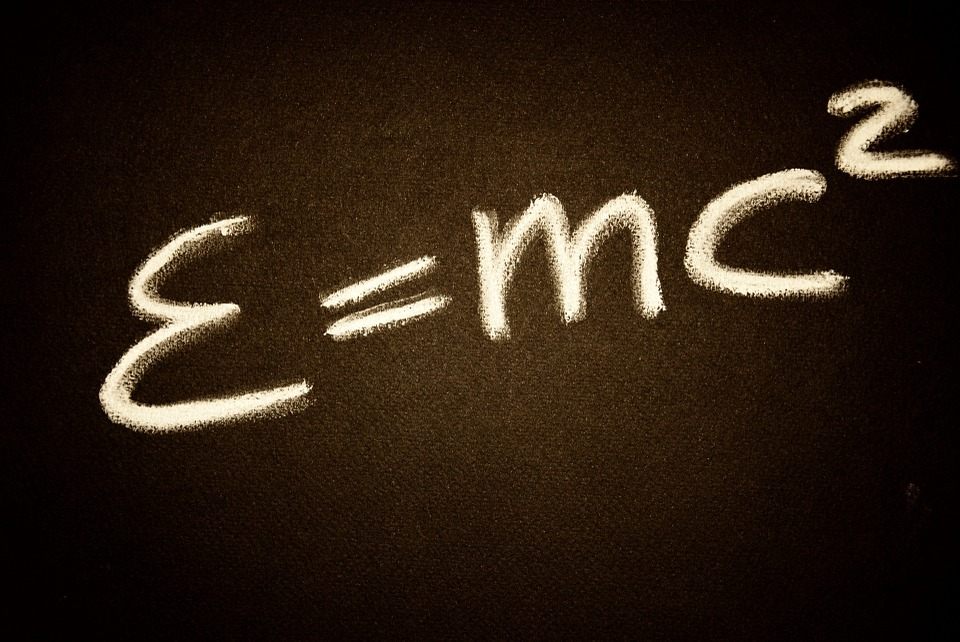
Albert Einstein himself proposed three tests of his theory of general relativity. Just one, which measures how the Sun’s gravity bends light from other sources, could only be measured during an eclipse in the early 20th century. He also suggested that the orbital ellipse of Mercury would change because of the sun’s gravity, and that starlight reaching Earth from large stars would shift to the red end of the visible light spectrum. These have all been observed. Other tests have been devised since then, and some are still in progress. The European Space Agency’s Gaia satellite will observe 500,000 quasars and measure how their light is deflected by massive objects like the Sun. Gravitational waves, first detected in 2015, also help test the theory, which predicted their existence. Proving the theory without eclipses would just have been a matter of time. —Kelsey Kennedy, Editorial Fellow
Jim from Cincinnati, Ohio, asks:
What are ‘Baily’s Beads’?

Despite what it may look like here on Earth, the Moon is not a perfect sphere. It’s covered in mountains, valleys, and craters, and they’re most obvious when the Moon passes in front of the Sun. During a total solar eclipse, sunlight shines through those peaks and valleys right as the moon’s edges line up with the Sun, creating beads of light—Baily’s Beads, named for astronomer Francis Baily, who described them in 1836. When the Moon moves so that there’s just one bead of light, it’s known as a diamond ring. —KK
H.T. from Missouri asks:
What exactly is the phenomenon known as ‘shadow snakes’?
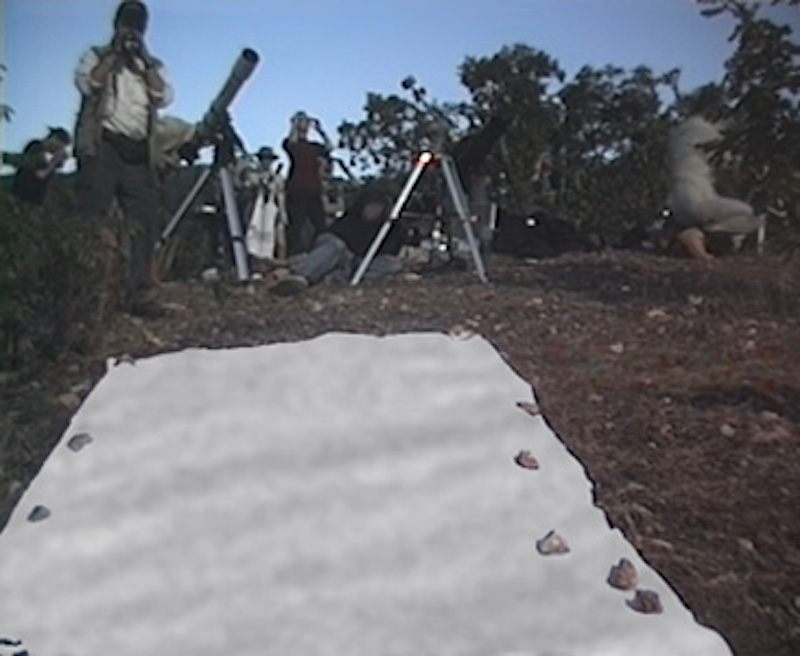
“Shadow snakes,” sometimes called “shadow bands,” are a bit mysterious. These waves of shadow can be seen just before and after totality, most easily on white surfaces, and were described as far back as the ninth century. But scientists still aren’t entirely sure what causes them. They’re unpredictable, and the most likely explanation is that they’re caused by the same atmospheric turbulence that makes stars appear to twinkle. —KK
Harley Boy Snigglesnort from New Orleans, Louisiana, asks:
As a dog, how dangerous is it for me to look at the eclipse? Should my man-friend keep me inside the entire time?
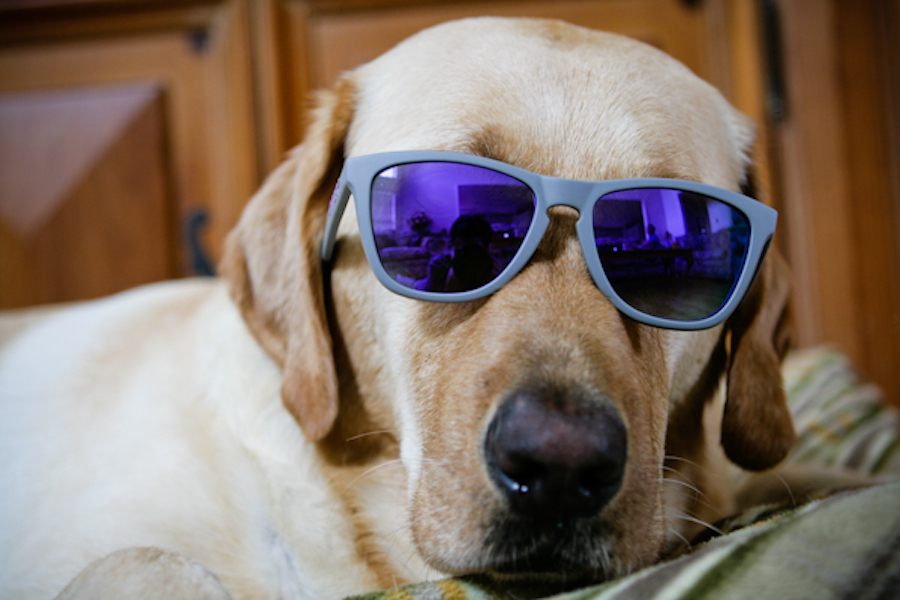
We received a couple of questions from … users, about whether the eclipse will negatively affect pets.
Though your pet will look adorable in a pair of eclipse glasses, they probably won’t need them. Animals are much smarter than we are, in their way, so they tend not to gaze at the Sun, even when it looks weird. On top of that, total solar eclipses can be a bit scary for animals. It may be a struggle to get them out from under the bed at all, at least until the darkness has passed. Just in case, perhaps it is best keep them inside with the blinds down. (You’ll have plenty of time earlier in the day to get your Instagram snaps of Lucky in his safety glasses.) —Natasha Frost, Editorial Fellow
Ella Mae from Arkansas asks:
When will the next eclipse occur?
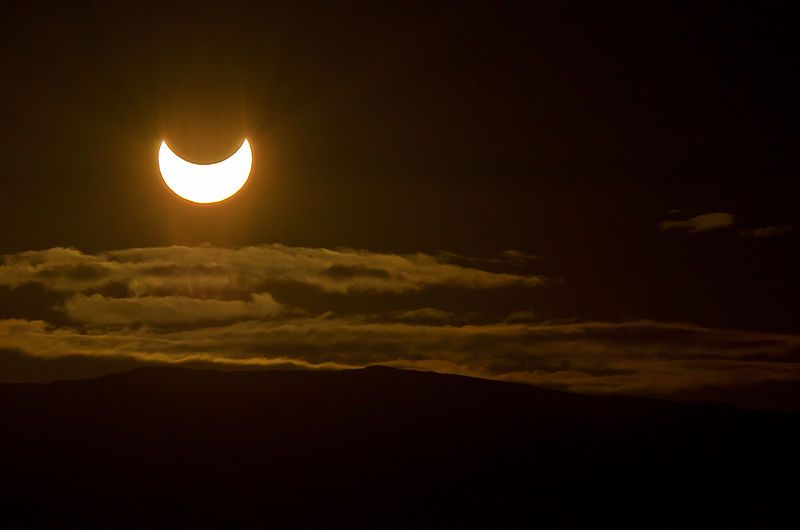
The next total solar eclipse is a little less than two years out, in Chile and Argentina. If you miss that one, there’s another about 18 months later, in the same general place. But you won’t have to go that far for another shot. In just seven years, another total solar eclipse will pass across a large swath of the United States—which means that some lucky people—the residents of Carbondale, Illinois, will get to see both from the comfort of home. If you’re thinking even further ahead, there are another seven coming between now and 2050. In fact, we’ve compiled details on all the notable upcoming eclipses just for you! —NF
Micki from Coral Springs, Florida, asks:
Why does the eclipse travel from west to east when the sun travels from east to west?

One of the strange-seeming things that will happen during the upcoming eclipse is that the shadow of the Moon will move from the west side of the continent to the east, in apparent opposition to the usual course of the Sun across the sky from east to west. An article on Space.com tackled this question, and the answer is that the movement of the shadow is dictated by the Moon, not the Sun. The Moon’s orbit goes west-to-east, and so goes the shadow! —EG
Andrew from Boulder, Colorado, asks:
Are there eclipses on other planets?

On August 20, 2013, the Curiosity Rover took a break from snuffling around the surface of Mars to watch something really cool: the larger of Mars’s two moons, Phobos, passing directly in front of the Sun. Unlike Earth’s moon, Phobos is too small and/or far from Mars to pull off a total eclipse. Instead, it did the best it could, interrupting the Sun’s brightness without obscuring it completely. Together, three photographs the Rover took look like a muppet rolling its eyes.
As astronomer Christa Van Laerhoven recently told Live Science, you really only need two things for an eclipse: a sun and a moon that orbits it on the same plane. While Mercury and Venus don’t meet this criteria, the rest of the planets in our solar system do, to varying extents. Mars gets the aforementioned partial blockouts, called “annular” or “ring” eclipses.
Jupiter, Saturn, Uranus, and Neptune all have numerous moons (Jupiter has 69, though only 53 have names so far!) so if you could stand on one of those gas giants, you would see eclipses fairly regularly—total ones when the moon in question is big or close enough, and partial ones when it’s not. Every ten years or so, three of Jupiter’s largest moons pass over the sun at the same time, and the planet witnesses a triple-eclipse. (It’s worth noting that the Sun appears much smaller in the sky from these more-distant planets than it does on Earth.)
Everyone’s favorite almost-planet, Pluto, also gets solar eclipses. It takes Pluto 248 Earth years to orbit around the Sun once. Twice during this period, Pluto and its largest moon, Charon, take turns getting in the Sun’s way, eclipsing each other once every single Plutonian day for about three Earth years. Then they quit it again until the next time.
Eclipses now probably seem like a dime a dozen! But if space tourists could pick anywhere in this solar system to see one, though, they’d probably come here, because our home planet’s moon is the perfect size for celestial drama. As Van Laerhoven explains, “When the Moon passes in front of the Sun, the photosphere [the Sun’s luminous outer shell] gets covered, but the corona [the sun’s upper atmosphere] remains visible.” This results in that classic view of an almost-completely-shrouded Sun, its light just barely peeking out around the edges. So rest assured: If you can catch totality, you’ve got the best eclipse view for billions and billions of miles. —Cara Giaimo, Staff Writer
Stephanie from Union, Missouri, asks:
How do eclipses affect tides?
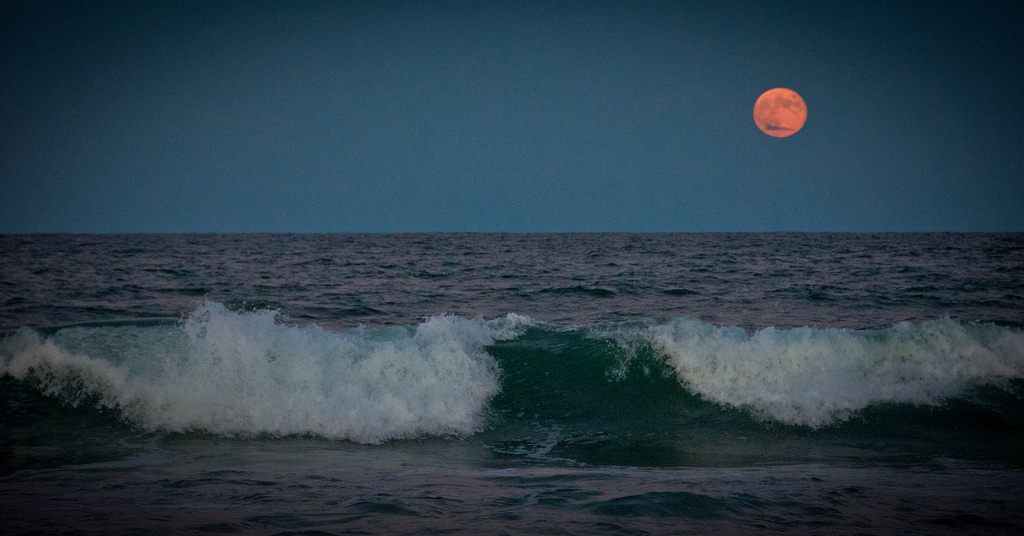
A handful of readers wrote in to ask whether the eclipse will affect the tides, and answer is yes! As we mentioned in our very own list of great places to experience extraordinary tidal forces, when the Sun, Moon, and Earth all align, it creates what is known as a “spring tide.” This powerful variety of tide produces the greatest difference between high and low tides. A spring tide occurs after every new and full moon, but they also happen during an eclipse. So if you plan on watching the eclipse near the water, you might want to wear flood pants. —EG
Ben from Atlanta, Georgia, asks:
What’s the funniest thing that’s ever happened during an eclipse?

This is a tough one. Since most people are too busy staring at the sky in awe to crack jokes, there’s not a whole lot of hilarious anecdotes out there, but we asked amateur astronomer and eclipse chaser Mike Kentrianakis, the man behind what is probably the most joyful (and pretty funny own its own right) eclipse video in existence. “[There’s a] story of an airplane cleaning woman who got locked into a flight that had to depart and they wouldn’t let her out because they had to leave exactly on time,” he says. “She ended up being the luckiest woman in South America because she saw was the only woman from South America to see the eclipse from the plane!” That might be funny? —EG
Still hungry for more eclipse knowledge? Check out all of our eclipse stories here!












Follow us on Twitter to get the latest on the world's hidden wonders.
Like us on Facebook to get the latest on the world's hidden wonders.
Follow us on Twitter Like us on Facebook